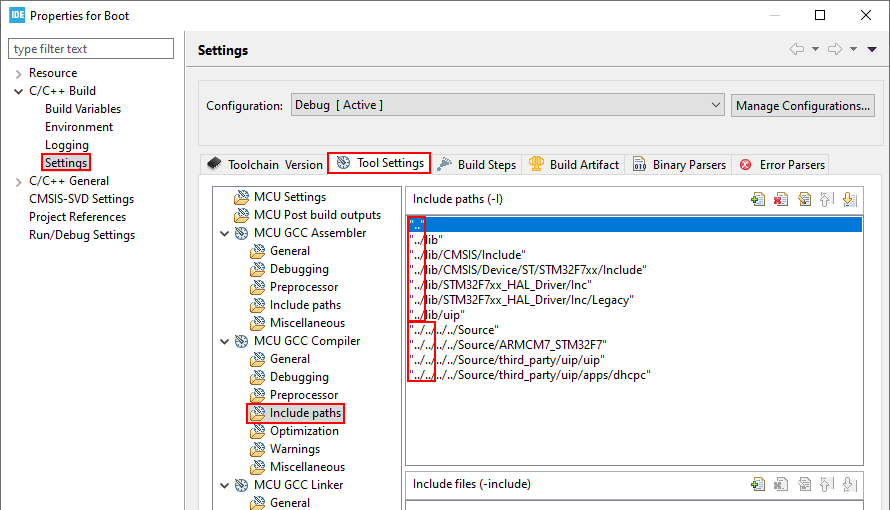
- #ATOLLIC TRUESTUDIO PATH HOW TO#
- #ATOLLIC TRUESTUDIO PATH INSTALL#
- #ATOLLIC TRUESTUDIO PATH DRIVERS#
- #ATOLLIC TRUESTUDIO PATH ARCHIVE#
- #ATOLLIC TRUESTUDIO PATH CODE#
In Windows refer to flasher utility and/or gdb server sections.
#ATOLLIC TRUESTUDIO PATH CODE#
To flash the code on the device, texane/st-link was used. In Windows refer to pre-requirements and tool-chain paragraphs. The code was then compiled using GNU make which in turns uses the gcc toolchain to produce the binary code. The first versions of HapticLib with the demo applications (up to v0.2) were developed in linux using only the vim text editor, but every other text editor can be used too. The library is versatile enough to be used without a complete IDE in fact you can compile the application and the library (including this documentation) using the provided Makefiles.

#ATOLLIC TRUESTUDIO PATH ARCHIVE#
Get the Atollic - TrueSTUDIO for ARM Lite, extract the executable like a zip archive and take the folder PATH_WHERE_EXTRACT\Servers\ST-LINK_gdbserver. While the client is included in tool-chains (arm-none-eabi-gdb.exe), the server must be installed apart.Ī gdb-server for Windows tested with this dev-board is provided by Atollic. Projects made for this dev-board can be debugged using gdb that include two elements: gdb-server and gdb-client. GDB Servers supported ST Microelectronics™ STM32VLDISCOVERY
#ATOLLIC TRUESTUDIO PATH INSTALL#
Get the official ST Microelectronics - ST-LINK Utility package and install them.
#ATOLLIC TRUESTUDIO PATH DRIVERS#
Probably there should not be any problem porting HapticLib to it.įlasher utilities ST Microelectronics™ STM32VLDISCOVERYįor correctly attach and use this developing board to Windows based systems, drivers and flasher utility are needed. You can download here a ready to use uVision4 workspace with all it's needed.Īt the moment the library dooesn't support this embedded platform. It works and is supported in HapticLib development. This toolchain comes with KEIL's uVision IDE. Note: With this tool-chain comes cs-make.exe and cs-rm.exe that can be used if preferred. Get the Mentor Graphics - Sourcery CodeBench Lite Edition tool-chain.

Mentor Graphics - Sourcery CodeBench Lite Edition Warning: Atollic tool-chain binaries are called arm-atollic-eabi-* instead of arm-none-eabi-*.

Note: The executable downloaded can be extracted like a zip archive and then only the tool-chain folder (PATH_WHERE_EXTRACT\$_OUTDIR\ARMTools) can be token and used as is. Get the Atollic - TrueSTUDIO for ARM Lite IDE that include tool-chain and gdb-server. Get the Linaro - GCC ARM Embedded tool-chain. Make sure the compiler collection binaries (arm-none-eabi-*) are available in PATH.Ī list of tool-chains tested, divided by Platform kind, is provided.Īll the arm tool-chains are similar (all originates from gcc) and probably will work just fine. Now that the operating system is correctly setup, a tool-chain is needed to compile the code. Please refer to Developer Guide for detailed informations. Note: Developers interested in building documentation must have in PATH Doxygen, LaTeX and ghost script tools. Note: For Cygwin: there is no need to install everything, select only the basic, developer and library parts.Īfter choosing the preferred package, make sure the above commands are available in PATH. Therefore a version of GNU make.exe for Windows is necessary.įurthermore some other Unix Tools are necessary to correctly execute all the operations defined in Makefiles:įor these reasons a more complete Unix Tools Package for Windows is suggested. Haptic applications and the library (including this documentation) are compiled using the provided Makefiles (refer to No IDE paragraph for explanations).
#ATOLLIC TRUESTUDIO PATH HOW TO#
Here is explained how to setup the development environment in different configurations using Windows Operating System.īefore start using HapticLib you need to correctly prepare the system. Note: This page is directed to developers of haptic applications on embedded platforms.


 0 kommentar(er)
0 kommentar(er)
